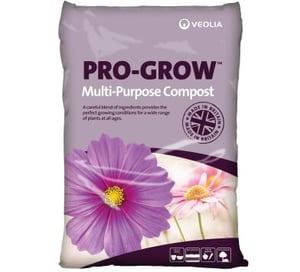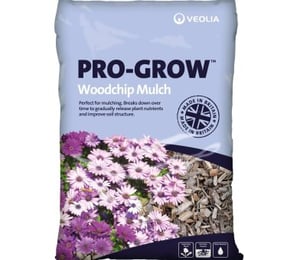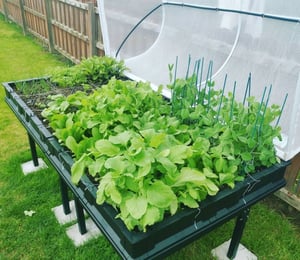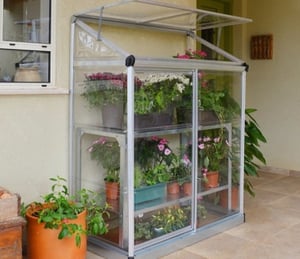How to Grow Your Own Blueberries - The Easily Grown Super Food
In this handy growing guide, Robert Hall gives a step-by-step tutorial on how to look after and grow your own blueberry plants at home in the UK.
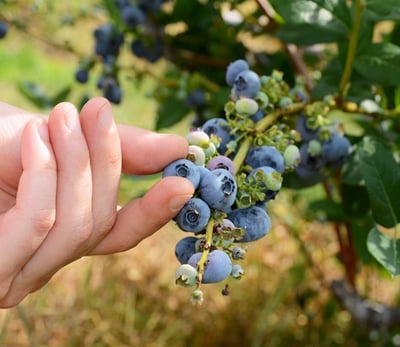
In this handy growing guide, Robert Hall gives a step-by-step tutorial on how to look after and grow your own blueberry plants at home in the UK.

What could be a better combination than getting a little exercise and fresh air out in the garden and being able to pick your own sweet-tasting superfood for next to nothing? It sounds good to me!
Blueberry plants are so easy to grow in the UK and require very little tendering and upkeep once planted out. Yet, they're not often a plant that many grow your own gardeners consider when planning their growing schedule at the start of the season. In this guide, I explore just how easy it is to grow blueberries at home, especially if you buy them as a ready-grown saplings, skipping the need for propagating them from seed.
Step one: Choose your plant
A blueberry plant is a blueberry plant - right? Well yes, pretty much, but you can still be selective when choosing a plant from your local garden centre. When picking one out from off the shelf, ensure you want to look for the best healthy-looking one, with an overall regular shape and healthy looking foliage. Check that there are not any insects or fly infestations under the leaves, and no weeds sprouting out the top of the pot which will have been draining out the goodness from the compost.
Alternatively, some garden centre's may only sell bare root cuttings of blueberry plants. These are perfectly normal too, so don't be put off if they look like a random twig, as once planted in soil and given time to grow, will also develop into a bushy, healthy plant.
As with most strains of plants there are different varieties of blueberries and when you go to your local garden centre to select one it is worth knowing you will have a variety that is suitable for garden and kitchen use, and you can be happy with that. It will have been selected to grow and crop well in the UK weather environment and that is most important.
Step two: Choose the best position for your blueberry plant
Once you have chosen the best shaped most healthy looking plant you need to select the best position for it in your garden. Whether you plan on planting it straight into the ground, or in a large enough container pot, choose a sunny or partly shaded site that is well drained. If you need to improve drainage add small stones at the base of the planting hole as blueberries do not like to be waterlogged, particularly in the wet and cold winter months.
Step three: How to plant your blueberry plant
It is important you get this right as you only get one chance to plant your blueberry in the soil it needs, and somewhat surprisingly, that is in ericaceous compost, or compost for acid loving plants. Ask for a small bag in your garden centre as they will have it available.
All you will need is a small spade and a pair of gloves. Dig the hole, slightly larger than the container it has been grown in, line the bottom of the hole with the ericaceous compost.
Water the plant first, put your fingers around the neck of the plant and turn it over. Squeeze the pot gently or give it a slight tap and the plant, with all the rootball and compost will come out of the pot. It is important to keep the roots and compost as undisturbed as possible.
Pop your plant into the hole and fill in all around the outside of the root ball with more ericaceous compost. Firm the compost down with your fingers. Top dress as well with the compost so the roots are now all surrounded. Water well and stand back and admire your plant.
Step four: How to give your blueberry plant the best start
If you are planting in the spring, summer or early autumn you will need to keep your plant very well watered, particularly if we get scorching summer temperatures. Like many things in life, blueberries are full of water and the roots will not have gone anywhere fast in its first year so it will need some nurturing.
Ongoing regular feeding, again with an ericaceous feed will give you the very best and biggest crop of blueberries. A starved and undernourished plant will give disappointing yields. There is no need to feed in the first growing season as the ericaceous compost contains a feed. But this will run out in time, and need replacing.
When it doesn’t rain you may need to supplement with water from your tap and this can be an issue in very hard water areas as there will be some alkalinity in your water, and we know blueberries are acid loving. One solution is to use rainwater and the other is to leave a watering can or two full of tap water for as long as you can so some of the alkalinity dissipates whilst standing. This is always a good practice whatever you are growing.
Step five: Harvesting your own fresh blueberries
You don’t often need kilos of fresh fruit all at the same time so you can go into the garden and pick the ripest berries on a daily basis. Roll your forefinger and thumb around the berry and they will come away very easily if fully ripe. Pick when they are blue all around the fruit including the base. Remove the flowers if they still exist. Wash and dry the fruits and they are ready to use. Superfood, super easy.
In essence, yes, but there are some mouths that you may not want sharing the fruits of your labour with you and I’m hoping, if you have read this far you are interested enough in this project to want to understand the whole story. This bit wasn't in the headline I know, but I still think growing blueberries, in our current economic climate of well being, is worth the investment in both time and money spent.
Birds and aphids are also hungry so you may, depending on where you live, need to put a net over your blueberry plant. A simple garden fruit net, which will cost you about £5 to cover the plant is the easy answer. Alternatively there is a specialised fine mesh net that is the bees knees when it comes to protecting your valuable fruit. The Enviromesh Ultrafine insect netting is specifically designed to protect your blueberries and other fruit and veg plants against a large variety of insect pests without the use of insecticides.
Another deterrent, or scarecrow, is to put lengths of shiny reflective foil ribbon on poles 2 metres away and leave them to blow in the wind
There is a small initial outlay and there is some nurturing required but, in my opinion, undoubtedly the answer is yes. Blueberries give great nutritional benefits for minimal calories, and the best part is they'll grow year after year!
It is a super food that is super easy to grow and share with your family and friends. And they are super tasty too!
Shop Now £179.99
Shop Now £239.99
Shop Now £324.99
Shop Now £189.99
Shop Now £249.99
Shop Now £329.00
Shop Now £299.00
Shop Now £174.99


